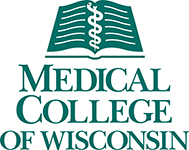Rehabilitation of dysphagia following head and neck cancer. Phys Med Rehabil Clin N Am 2008 Nov;19(4):889-928, x
Date
10/23/2008Pubmed ID
18940647Pubmed Central ID
PMC2593402DOI
10.1016/j.pmr.2008.05.010Scopus ID
2-s2.0-53949101821 (requires institutional sign-in at Scopus site) 153 CitationsAbstract
Patients who have cancers of the oral cavity, pharynx, or larynx may be treated with surgery, radiotherapy, chemotherapy, or a combination of these modalities. Each treatment type may have a negative impact on posttreatment swallowing function; these effects are presented in this article. A number of rehabilitative procedures are available to the clinician to reduce or eliminate swallowing disorders in patients treated for cancer of the head and neck. The various procedures-including postures, maneuvers, modifications to bolus volume and viscosity, range-of-motion exercises, and strengthening exercises-and their efficacy in patients treated for head and neck cancer are discussed.
Author List
Pauloski BRAuthor
Barbara R. Pauloski PhD, CCC-SLP Associate Professor in the Communication Sciences & Disorders department at University of Wisconsin - MilwaukeeMESH terms used to index this publication - Major topics in bold
Antineoplastic AgentsDeglutition
Deglutition Disorders
Exercise Therapy
Head and Neck Neoplasms
Humans
Laryngectomy
Postoperative Complications
Posture
Radiation Injuries
Severity of Illness Index









